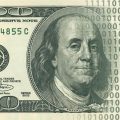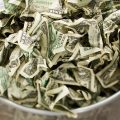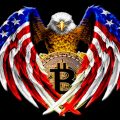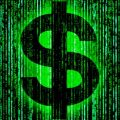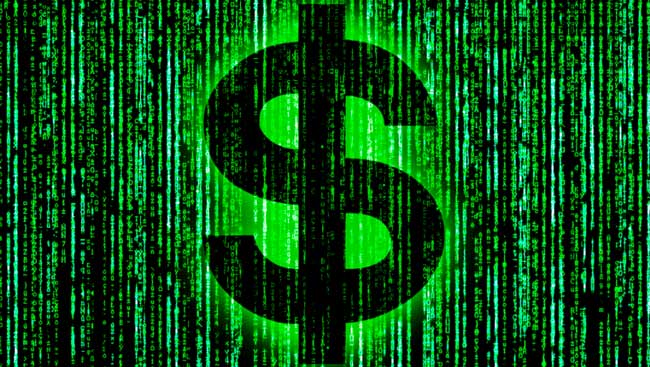
The COVID-19 pandemic has reignited the digital dollar debate in the United States. Stimulus payments have once again shownimperfection of the existing payment infrastructure.
The digital dollar is slated to be the ideal direct payout tool. But supporters of the tokenization of the American currency argue about how it should exist.
Is a centralized but completely confidential digital dollar possible, what is the role of commercial banks in its distribution, and when to expect the launch of a new currency?
Centralized and private
In April this year, Matthew Green and Peter WangValkenburg, researchers at the Coin Center (an organization that studies government regulation of cryptocurrencies) published an essay entitled “Do We Really Need a Digital Dollar Without Privacy?” The name accurately frames the main political question of launching a cryptodollar: if it is not confidential, then what is the use of it.
The main conclusion of the article: the digital dollar should resemble cash as much as possible so that any user has the ability to make anonymous transactions. Let's take a quick look at the other conclusions of the essay.
The digital dollar will be centralized.The tokenized dollar will not be realcryptocurrency - the authorities will take full control over it, similar to how the US Federal Reserve System (FRS) currently controls the fiat dollar. Other options for issuing an American CBDC are impossible - after all, we are talking about a state currency.
Moreover, China's experience in developing digitalyuan shows that central bank digital currencies (CBDCs) may be subject to much more control than existing fiat currencies. It is expected that all transactions with the digital yuan will be anonymous for third-party users, including intermediary banks, but completely open to the central bank. However, researchers consider this approach for the United States to be erroneous - even greater centralization will not benefit the financial system.
The digital dollar must be kept private.Green and Van Valkenburg believe that despite the centralization in the cryptodollar, one of the main functions of cryptocurrencies can be preserved - their privacy.
The authors write that confidentiality and reliabilitycurrencies can appear incompatible: in a traditional financial system, a bank must keep track of the exact balances of all customers and record all transactions to prove that users are only spending the money they have.
However, blockchain makes it possible to provideconfidentiality while maintaining the accuracy of the registry. This is possible thanks to the technology of “zero knowledge proofs” (zero knowledge proofs, or zk-SNARKs). This crypto protocol allows transactions to be carried out without revealing any information about the sender, recipient or amount sent, while at the same time ensuring the safety of funds and the ability to check the account balance.
The architecture of the cryptodollar will resemble Facebook's Libra.Green and Van Valkenburgh believe thata centralized digital dollar will have several technological differences from existing cryptocurrencies. Its architecture will be closest to the never-launched project from Facebook. Libra provided a network infrastructure operated by established crypto service providers, but the network could be used by anyone with a computer or phone. Members of the Libra Association were required to maintain a register of transactions, but not control the transactions of users who could freely transfer funds to each other. By this logic, the US Treasury could take over the maintenance and updating of the digital dollar transaction registry.
The digital dollar will remain a fiat currency.Cryptodollars, like traditional ones, are not at allmust be provided with something. At any time, the government can issue as many digital coins as it wants. Thus, the digital dollar will essentially remain fiat. The Fed would retain control over the amount of money in circulation and could adapt a digital currency for the banking system. Also, such a fiat digital dollar is convenient for direct stimulus payments or providing a basic income.
The digital dollar is easy to scale.The huge advantage of the digital dollar overdecentralized cryptocurrencies is the ability to conduct “up to hundreds of thousands of transactions per second.” But this is ensured through centralization - authorities have the ability to block payments and monitor transactions.
Green and Van Valkenburg emphasize that“Digitizing” the dollar is not a panacea for the current economic downturn and other possible problems. Moreover, it carries with it new, as yet unknown, risks. But if the authorities decide to launch the digital dollar, there is a chance the financial system will become more convenient and faster, while retaining much of the privacy inherent in cash transactions.
The researchers also point out that for morea fair financial system needs to leave cash. The transition to a completely cashless system will give the authorities control over access to bank accounts and other financial instruments.
“A cashless economy is an economy of surveillance and control, a closed economy that only works for the privileged and the politically acceptable.”, - said in the article.
The centralized but private digital dollar is battling this state of affairs.
“Cash, along with cryptocurrencies,required as a means of payment of last resort, which cannot be controlled by corrupt governments or unscrupulous corporations ", - summarize Green and Van Valkenburg.
The Digital Dollar Project concept
Coin Center researchers aren't the only onesis studying the possible principles of the future digital dollar. In the United States, there is an entire non-profit organization working to research and support public discussions about the digital dollar - The Digital Dollar Project (DDP).
The project was launched in January this year by fundsDigital Dollar Foundation and Accenture. It is chaired by former Chairman of the US Commodity Futures Trading Commission (CFTC) Christopher Giancarlo, head of Gattaca Horizons and former CFTC Chief Innovation Officer Daniel Gorfine, and a number of Accenture employees.
At the end of May, DDP published the “White Paper” of the projectentitled “US CBDC Study.” In it, the organization called for consideration of a two-tier distribution system, described in detail the need for a tokenized version of the US dollar and the potential possibilities for its use. The authors of the document believe that CBDC will help the United States maintain the dollar's status as the world's reserve currency, while serving a wider range of individuals and entities than the current financial system. Tokenization will make the dollar even more global and in demand.
Consider the supposed characteristics of the digital dollar as seen by DDP members:
The digital dollar is the third form of money.The digital dollar will be a tokenized formUS dollar. The American CBDC will fully correspond to the regular fiat dollar and will become another form of it, along with cash banknotes and non-cash payments. This addresses the issue of the digital dollar competing with traditional currencies in the domestic market, which could worsen US economic woes.
Full compliance with regulatory standards.The authors of the document emphasize that digitalThe dollar is not a revolution in the architecture of the existing financial system. It must and will operate within the current regulatory framework. The digital dollar will comply with all KYC/AML regulations.
Privacy is a key challenge.The digital dollar will have to balance betweencompliance with necessary regulatory requirements and the right to privacy. This is not an easy task for a coin that is completely controlled by the Fed. The authors acknowledge that a completely anonymous system will allow illegal activities to take place. But no one wants complete control over any financial actions. However, the authors do not have a solution to the problem - they limit themselves to only mentioning the need to make changes to existing legislation.
The digital dollar will enhance the efficiency of the current financial system.DDP members believe that the current bankingthe system is not efficient enough and a tokenized dollar can significantly improve it. After all, it is faster, more efficient, cheaper and can expand the usefulness of the dollar. It is emphasized that the digital dollar will not affect the Fed’s monetary policy and its ability to control inflation. It also states that it should be accessible to all groups of the population, including those who do not have a bank account.
In conclusion, the authors spoke about the needdeveloping a series of pilot programs and testing potential uses of the digital dollar, after which it should be validated in real life. It will take five to ten years, but "you need to start now."
Among the use cases for tokenizeddollar: domestic and international transfers, as well as payment of benefits. One of the main areas of application of the digital dollar, according to the authors of the document, should be cross-border money transfers (primarily between the United States and Mexico).
DDP members note that building infrastructuredigital dollar is possible only with close cooperation of the authorities with the private sector. He is much more innovative, so it is better to entrust technical issues to him. But the state is better off focusing on regulating the future asset.
Two-tier digital dollar distribution model
The DDP also discusses in detaila model for the distribution of digital tokens among citizens. This is a fundamental question about which diametrically opposed points of view are expressed. Therefore, we will consider it separately.
DDP members propose to keep the current systemdistribution of currency. The digital dollar will be issued by the Fed, from where it will go to commercial banks and regulated intermediaries (financial service providers), and then to ordinary people. This will lead to a partial decentralization of the digital dollar. In this case, the financial system will change minimally. It's just that, in addition to the usual dollar, there will also be a digital one with similar functions. But the intermediaries between the Fed and users in the person of commercial banks will remain.
This type of system allows physical andfor legal entities to keep funds in commercial banks. This "will support the US economy by allowing banks to lend to borrowers for activities such as buying a home, building a new factory, and everything else." “The two-tier banking system maintains the existing distribution architecture and associated economic and legal benefits, while attracting innovation and affordability,” the document explains. A tokenized dollar would be more widely applicable, including outside the US, according to the DDP authors.
However, another, more popular one, is also popular in the USA.a revolutionary model for the distribution of national digital currency through the creation of FedAccount - direct federal accounts at the Federal Reserve. According to it, the tokenized dollar will be available to users immediately in their accounts with the Federal Reserve System - no intermediary banks are needed. Proponents of FedAccount argue that the two-tier system does not improve financial inclusion. But FedAccounts, where households and businesses can have accounts directly on the Fed's balance sheet, make it easy, cheap and quick to send money to those who need it. More details on the essence of the approach can be found in the study of three legal scholars Morgan Ricks, John Crawford and Lev Menand or in the article by Federal Reserve economist David Andolfatto.
It is noteworthy that in the spring of this year just suchThe approach was reflected in two bills filed in Congress: House Financial Services Committee Chairwoman Maxine Waters' digital wallet provision and Senator Sherrod Brown's Banking for All bill, which would create a free digital dollar wallet called FedAccount.
When assigning incentive direct payments to the authoritiesfaced with the fact that a third of citizens - 8 million people - do not have bank accounts, that is, there is nowhere to transfer money. I had to send them by paper checks by mail, so the process dragged on for months. With a digital dollar account, this would not be a problem. While the proposed initiatives were not finalized in the incentive pay clause, they sparked a broad discussion of the digital dollar.
The introduction of FedAccount is of course muchwould significantly change the country's financial system. Moreover, its consequences would be unpredictable - it is not known how this would affect the banking industry, without which the modern economy is impossible.
Also, such a vision of CBDC is to expandaccess to central bank money, and therefore its role, underscores the underlying challenge of the Fed creating its own digital currency. If everyone, not just banks or certain types of financial firms, has direct access to accounts with the Fed, then private banks will find themselves in direct competition with the Central Bank for retail customers and, naturally, will lose the fight for them. In this case, the authorities will gain complete control over the money entering the accounts of each person.
Stronger controls are expected to helpThe Fed provides monetary policy solutions and financial stability. But for many, this level of state control is simply incompatible with economic and political freedom. However, it is quite possible for two distribution systems to coexist - FedAccounts direct accounts with a two-tier system.
Finally
June 30, 2020 US Senate Banking Committeeheld a second hearing on the digital dollar. Officials and experts have not reached a consensus on the need to tokenize the currency, but the fact that the country's authorities are discussing the potential of the digital dollar at the highest level suggests that regulators and governments are finally realizing the potential benefits of implementing blockchain and digital assets into the country's financial system.
Although the American authorities have not yet officiallyare planning to issue their own digital currency, this topic is being raised more and more often. The coronavirus pandemic and growing competition in this direction from China, which has already launched testing of its digital currency DCEP, increase the chances that a tokenized dollar will one day appear.

Rate this publication
